Reputation management is on the minds of leaders in the public sector. The desire is to strategically manage and strengthen the organization's reputation so that it becomes clear who the organization is and what difference it makes. Reputation management in public sector organizations consists of four dimensions that can serve as a guideline for specific work.
More and more Danish senior leaders are working strategically to manage and strengthen their organization's reputation. For example, one study reports that almost 90% of Danish municipalities have a strategic focus on their reputation, while another study reports that 80% of Norwegian municipalities have increased their focus on reputation management in recent years.
As we write in the article: "Reputation management in the public sector: between differentiation and imitation"however, public sector organizations can face a number of problems if they uncritically adopt approaches to reputation management that have their roots in the branding literature from the private sector. In this article, we will therefore concentrate on what reputation management is and what you need to be aware of as a public sector leader who wants to manage and strengthen your organization's reputation.
We define organizational reputation with reference to the American researcher Charles J. Fombrum as the way an organization is perceived by its environment over time compared to other organizations. Reputation is furthermore an overall assessment of an organization's attractiveness, based on perceptions and impressions of the organization.
In short, reputation answers the question: Is there a predominantly negative or positive perception of the organization as a whole?
Of course, the question brings things to a head, because reputation will rarely be unambiguously negative or positive. That's why the definition requires further elaboration.
Reputation is based on perception and is therefore socially constructed. It is based on the sum of many perceptions of the organization across different groups of internal and external stakeholders. It is based on comparisons with others - or with the organization itself - over time. And so reputation can be positive or negative, strong or weak.
The three F's of reputation
We both have a penchant for rhyming, so the three F's are the reputation:
Changeable, which means it can change over time. For example, every year from 2009 to 2021, Aarhus University Hospital was voted Denmark's best hospital. However, its reputation suffered severe damage in a short time when first the leg amputation scandal and then the cancer scandal hit the Danish media and led to layoffs. Conversely, it is also possible to improve a bad reputation through persistent efforts.
Diverse, meaning that reputation is about perceptions of an organization, and different audiences' impressions of the organization can vary quite a bit. So one audience may have a positive impression while another has a more negative one. Research calls this the "Rashomon effect", a narrative device named after the 1950 Japanese movie "Rashomon". In the movie, four witnesses each retell very different versions of a murder, and the effect reflects the varying and contradictory consequences that individual interpretations and self-interest can have on the truth.
Multidimensional, referring to the fact that public reputation management consists of four dimensions. As we have already mentioned, importing the branding literature's claims of being unique and differentiating yourself from your competitors in the marketplace can lead to problems, especially in a public context. To overcome this problem, American Harvard professor Daniel Carpenter identifies the following four reputation dimensions that apply to public organizations:
1
The procedural reputation: Does the organization comply with applicable laws, regulations, procedures and classic good governance?
2
Technical reputation: Does the organization have the necessary professional skills, is it able to handle complex situations and does it base its decisions on a strong knowledge base? What professional and managerial skills does the organization have?
3
Moral reputation: Is the organization acting morally and ethically sound or exemplary in the way it performs its tasks? And does the organization live up to societal norms and values?
4
The results-oriented reputation: Does the organization have the capacity to perform its tasks in an efficient manner while ensuring high quality?
It follows logically as a consequence of the four dimensions that an organization does not necessarily have an overall positive or negative reputation, as an organization can have a good procedural and moral reputation, but a less good technical and result-oriented reputation. And the opposite can be true for another organization.
At the same time, it can be difficult to promote the organization's reputation on all four dimensions at the same time. Therefore, management can continuously decide which dimensions are particularly relevant to pay attention to. The goal is to influence certain target groups' perception of the organization on that particular dimension or dimensions.
Reputation management in practice
In the past, public reputation management research was mostly concerned with organizations' reactions to crises, scandals or other issues that could threaten reputation. But reputation management is much more than crisis communication and refuting criticism, so today the literature on reputation is more proactive. Reputation management itself is therefore about actively influencing how those around you view the organization and what expectations they have of it. This proactive work can be based on the four dimensions of reputation.
In order to strengthen the procedural reputation the organization must comply with applicable legislation, rules, procedures and good governance. The task for management is therefore to ensure that the organization is compliant and in control of the details and core mission.
To strengthen technical reputation the organization must have employees and managers with a high level of knowledge who are able to make complex decisions based on the right knowledge base. The task for management is to attract, train and develop the skills of employees and managers so that tasks are based on recognized methods, research-based knowledge and proven practical experience.
To strengthen the moral reputation the organization must perform its tasks in a morally and ethically sound and exemplary manner. The task of leadership is to promote a healthy organizational culture where people know what is acceptable and unacceptable to do, both personally and professionally.
To strengthen the result-oriented reputation the organization must perform its tasks in an efficient and high-quality manner. The management task is to set clear and understandable success criteria for the tasks that strike the balance between quality (completing tasks in a formal and comprehensive manner) and efficiency (completing tasks quickly). You can use a cliché to talk about what grade the assignment should be given: some assignments require a 12, others can settle for a 7.
Proactive approach
Even if a public organization does everything right on the four reputation dimensions, you're still behind the curve from the start - simply because you're a public organization. Public sector organizations are associated with rigidity, bureaucracy, slowness and inefficiency. Secondly, there is a negativity bias in the public sector, where the media, opposition, voters and citizens focus on the negative stories and let them take precedence over the positive. Furthermore, one negative story increases the risk of more negative stories in the future, so the "reputational history" lingers.
It may seem unfair, but it's a clear indication of why it makes extra sense to engage strategically with reputation management as a public leader. Both for your own sake and for the sake of the public sector as a whole.
One way to build a credible and long-term reputation platform to protect your organization's reputation is to develop a core narrative. This includes mission, vision and values. Unfortunately, they often run the risk of either falling into the "conformity trap" where, in the quest to be unique, you end up copying others or expressing yourself with rhetorical platitudes that do not reflect who the organization is, but simply describe it with self-influencing truisms that apply everywhere else. The mission, vision and values should only apply to this particular workplace. At the same time, it should be clear which behaviors are within the boundaries and which are not.
The core narrative lays a secure foundation for the organization that can help ensure consistency between what the organization says it does and what it actually does. This coherence is one of the most important paths to long-term credibility. But without a common foundation to stand on, it becomes difficult to ensure continuity and shared understanding.
The good stories
However, as mentioned, it can be difficult as a public organization or leader to get the positive stories out there. At least in external media. A final recommendation here is to work strategically to share the positive stories that inspire and create identification. This can be in earned media , i.e. other people's media that provide column space, such as TV, newspapers, radio, trade media and podcasts. It can be your own media and channels, such as websites, newsletters, blogs, LinkedIn, webinars and videos. Or it can be paid channels, such as ad space on Google, social media, paid collaboration and display ads.
Communication efforts can be part of a strategy on how to proactively influence the positive narrative about the organization. As part of such a strategy, researchers Heidi Houlberg Salomonsen and Mette Østergaard recommend three steps, which we will conclude with:
a
You start by identifying the perceptions and expectations of the organization that the environment has regarding the four reputation dimensions.
b
Then prioritize which stakeholders are important to communicate to. Which groups, people, parties and organizations are particularly important to have a good reputation with? And what should characterize your reputation? You can find inspiration in the four reputation dimensions and the 15 factors for the attractive workplace that make up LEAD's holistic model for the attractive workplace. Read more about LEAD's holistic model here.
c
Then, communicate to your priority audiences in a way that can influence their perception of the organization. It could be by talking about the difference the organization makes for citizens or society. It could be the vision you are working towards. Or the story about the great development opportunities you have as an employee in your organization.
Keep in mind, however, that the people most interested in external communication are usually the organization's own employees. They are also typically the ones who can best assess whether the communication is credible and accurate. So even if they are outside the external target audience, they should always have an implicit meaning in the communication. Research recommends that communication should be clear, open, visible, consistent and express what is distinctive about the organization in a realistic way. If communication is too stilted, it risks damaging rather than enhancing reputation.
Want to read more?
Then we can recommend:
Daniel Carpenter (2010) "Reputation and Power: Organizational Image and Pharmaceutical Regulation at the FDA. Princeton, NJ: Princeton University Press.
Heidi Salomonsen and Mette Østergaard: "Reputation management works both externally and internally"
Christian Nyvang Qvick "Is there anyone at home in the strategy house" (2023). Hans Reitzels Forlag: Copenhagen.
Mette Østergaard: "Reputation Management in Public Organizations". PhD thesis from the King Frederik Center for Public Management





